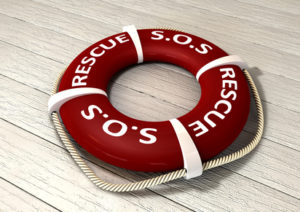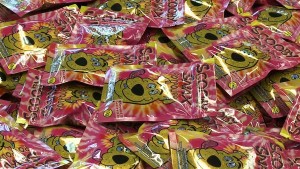Channeling Your DXM Personality
June of 2016 was a confusing month for DXM. Alaska became the 11th state to limit the sale of products containing dextromethorphan (DXM) to individuals 18 and older. Representative Charisse Millett of Anchorage thanked her colleagues for passing a bill that will protect Alaska teens. On the other hand, there was a study published in the journal, Substance Abuse Treatment Prevention, and Policy by Spangler, Loyd and Skor that same month which said DXM was a safe, effective cough suppressant, available without a prescription since 1958. The article reported how the annual prevalence of DXM abuse has sharply decreased since 2010. So why would so many states be restricting the sale of a “safe, effective cough suppressant”?
Adding to the issue, there is H.R. 3250, The DXM Abuse Prevention Act, which was sent to both the House and Senate for consideration on April 27, 2016. H.R. 3250 seeks to prevent the abuse of DXM and would restrict its sale to individuals 18 and over. Civil penalties for retailers violating H.R. 3250 would range from a warning for a first offense up to $5,000 for four or more violations. If implemented, the federal law would take precedence over any existing state legislation.
The pro-drug website Erowid noted that while DXM is still unscheduled in the US, and legal to buy, possess and ingest without a prescription, it is becoming increasingly difficult to purchase. “Some pharmacies and mega-stores like WalMart have instituted voluntary procedures to reduce the sale of DXM-containing products to minors.” Erowid listed and commented on the legal status of DXM in 25 different states and was soliciting more information on its status in other states.
In 2007 the DEA requested that the FDA evaluate whether dextromethorphan should be scheduled as a controlled substance. Three years later the FDA held an Advisory Committee meeting on the matter. After hearing presentations on DXM and its abuse potential, the committee voted 15 to 9 against scheduling DXM. An Erowid assessment of the presenters was they did not believe that scheduling was warranted, but were concerned about abuse.
The DXM article by Spangler, Loyd and Skor said that to address reports of abuse, the Consumer Healthcare Products Association (CHPA) initiated a plan to raise awareness of the behavior and “address prevention by focusing on the factors that impact teen behavior.” All three authors were employees of the CHPA, “which represents manufacturers of over-the-counter medicines and dietary supplements.” And funding for the research, collection of the data, analysis, interpretation, plan implementation, and writing of the manuscript was provided by CHPA member companies. They concluded:
It is noteworthy that the annual prevalence of over-the-counter cough medicine abuse has sharply decreased since 2010. While a true cause-and-effect relationship cannot be assured, the Consumer Healthcare Products Association and its member companies believe that the increased awareness of the issue since the 2010 Food and Drug Administration Advisory Committee meeting, and the subsequent implementation of a well-delivered and targeted abuse mitigation plan that addressed the levers influencing teen decisions is contributing to the observed reduction in abuse. During the period of 2010–2015, reported abuse of dextromethorphan by 8th, 10th, and 12th graders decreased 35 %. The authors believe this reduction supports the view of the Consumer Healthcare Products Association at the outset of the abuse mitigation plan effort and today: Controlled substance scheduling or prescription requirements would result in a reduction in the legitimate use of this medicine that has benefits that far outweigh its risks. Instead, there are more targeted, more effective, and less disruptive interventions to address dextromethorphan abuse.
Writing for The Fix, John Lavitt reported that one in 30 adolescents use DXM to get high because it is cheap and accessible. In 2014 there were six DXM-related deaths, according to the American Association of Poison Control Centers. Non-medical use of DXM leads to around 6,000 ER visits per year. Adolescents account for almost 50% of those visits. The effects range from mild stimulation to euphoria and hallucinations. There can be an out-of-body dissociative state, complete dissociation with unresponsiveness and even overdose.
Medline Plus lists some of the many products that contain DXM, including NyQuil, DayQuil, TheraFlu, Tylenol Cold, Dimetapp DM, Robitussin DM, Triaminic DM, and Alka-Seltzer Plus Cold and Cough. Some of the symptoms of a DXM overdose listed included: breathing problems, bluish-colored fingernails and lips, blurred vision, coma, Convulsions, drowsiness, hallucinations, heart palpitations, nausea and vomiting, rapid heart beat.
Now here is some DXM history from Erowid. It was approved by the FDA in 1958. In the early 1960s, there were reports that beat poets like Allen Ginsberg and Peter Orlovsky and the author Jack Kerouac were using DXM in the form of Romilar tablets. Incidentally, Romilar was introduced as a replacement for codeine cough remedies in an attempt to cut down on abuse. In 1973, Romilar DXM tablets were removed from the market after an increase in recreational use was noted. DXM continued to be available as a syrup, with the thinking that consuming large quantities of syrup would be deterrent for recreational use. OTC DXM tablets have been back on the market now for number of years. In the late 1980s DXM use was prominent among the punk subculture.
By the way, codeine cough syrup is main ingredient in the concoction “Sizzurp” that sent rapper Lil Wayne to the hospital with multiple seizures. He even wrote a song about his love for Sizzurp, “Me and My Drank.” Then there’s Justin Beiber and his street-racing-DUI-Sizzrup arrest. Teens and others without ready access to a codeine prescription cough formula can substitute OTC DXM formulas in their Sizzurp knockoff. Add some Jolly Ranchers to make the concoction more drinkable.
So while DXM may be safe and effective when used as recommended, it was being used as a recreational high almost from the time it came onto the market as a substitute for codeine. It has ebbed and flowed in its consideration for classification as a controlled substance. Currently it isn’t one. However, it does seem likely to face restricted sales to anyone under the age of 18. Eleven states have already passed legislation to that effect, and larger chains like WalMart, Walgreens, Target, Rite-Aid and others now require ID and limit sales to two DXM-containing products. And there is pending federal legislation that has a 38% of passing that would make it illegal to sell DXM products to minors. The last word on DXM is from Erowid.
Recreational DXM use continues. A number of deaths have been documented due to the recreational use of DXM although a majority of these have been the result of products (such as Coricidin Cough and Cold) that combine DXM with other substances that become dangerous in high doses.
So if you decide to try and contact your inner beat poet, or channel your punk rock personality through DXM, be careful.







